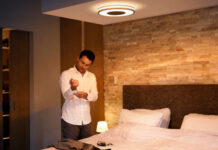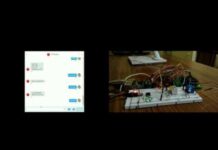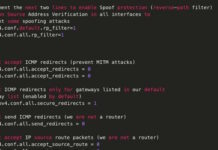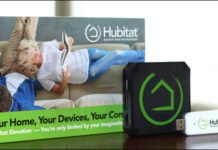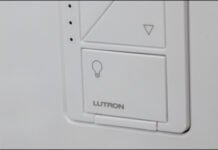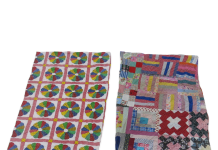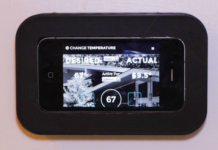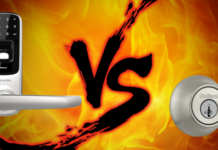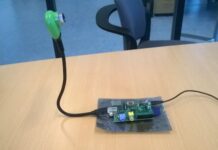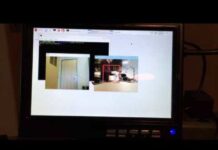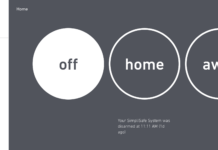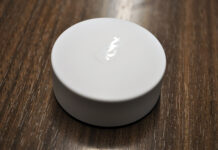Home automation is a beautiful industry that can turn your home in the ultimate paradise. However, if you are not familiar with the specific jargon, things can become quite confusing.
In today’s article we want to introduce you in the terminology to avoid further confusion and misunderstandings.
So let’s start from the most used to lesser known terms and get you started with this small home automation dictionary.
A
Actuator
Is a home automation device designed to enable the switching process (on/off) or sends analogue signals such as (0% to 100% for light dimmers volume).
Architectural
In the home automation industry the term architectural refers to loudspeakers that are seamlessly integrated within the wall of the building or the ceiling without interfering with the overall design whatsoever.
Automation
The term automation is the ability to integrate different smart devices together for the purpose to control each and everyone of them from a central hub.
B
Bridge
A bridge is a type of connection which works between your smart home devices and the internet. This makes it possible to control certain devices from anywhere in the world remotely.
C
CEDIA
Also known as the Custom Electronic Design and Installation Association, the lead association that supports the implementation of standards in the home automation industry.
CEDIA is a global initiative which has over 3700 member companies and home automation specialists.
Cellular Alarm System
It usually means that the system doesn’t need hardwired landline because the control panel communicates with the remote monitoring center via cellular signals.
Controller
Is a term used to describe the brain of the home automation operations. The controller is the one that connects smart devices between each other.
CAT5/CAT6
Is a type of cable frequently used in the home automation industry for network wiring. It is the type of cable which connects to the router and makes the connection between the router and wired home automation devices.
CFL
Is the abbreviation for Compact Fluorescent Lamp an energy saving alternative to the classic incandescent lightbulb.
CFR
Stands for Compact Fluorescent Radio Lamp. They are basically the same as CFL, but they also include a radio receiver. This enables them to be controlled remotely via the WiFi network.
D
Dashboard
A dashboard is usually a user interface on a mobile device such as a mobile phone app or a web portal from which you can see the statistics and live data gathered from all or some smart devices in a smart home.
On top of that, some dashboards also allow you to control certain features of the smart devices such as lights, music, heating etc.
Device Pairing
Refers to including a device in the network of another in order to gain control or to share the configuration options from each other.
Example: pairing an iPhone music playlist to a Snonos Bluetooth speaker.
Dimmer
A wireless device that controls the light brightness as well as the on/off states of the light in a room or house.
Learn more about dimmers and lighting controls.
Distributed Audio
Refers to home automation processes that include whole-house audio or multi-room audio systems which can be controlled from the entire premises of the building via a smart speaker, remote or a touch controller.
Distributed Video
Just like Distributed Audio systems, a distributed video system refers to a home automation integration which installs TVs and displays throughout the home or in multiple rooms having one central controller.
E
Event
An event is something that happens and while it happens, it triggers one or multiple smart devices in your home.
Example:
When the morning comes and it’s 7:00 AM, the smart blinds will roll up to let the sunshine get inside your room.
Ethernet
System to create a computer network using cables.
G
Gateway
Is the one that connects your local network (home network) to the global network (internet).
Geo-Fence
Geofencing is a technology used to secure your home. Usually this relies on a GPS positioning system. Geofencing tracks your smartphone location in order to detect you or your family’s position in reference to your home.
This will trigger an event designed to better serve your needs.
Example:
Geofencing will detect when your children get back from school and will automatically open the backyard door for instance.
The same can work for opening the garage door or enabling remote access to visitors via a smart lock.
Group
In home automation, a group refers to a collection of devices that share the same controller.
Example: A group of smart shades / blinds controlled from the same remote button.
G.U.I
Or a Graphic User Interface is another term which refers to the user interface from a mobile app / touch panel / TV etc designed to control smart electronic devices.
H
Hardwired Security
Is a term used for wired security which is thought to be more secured. However, this is not the case as now wireless has advanced WPA encryption and is the norm nowadays.
HVAC
Or Heating, Ventilation and Air-Conditioning. Is the system technology in charge with the environmental comfort of a smart home.
I
IoT – Internet of Things
Is a term that represents the inner connection between surrounding, every-day objects that are able to communicate via the use of internet.
Good examples of IoT devices are:
- Smart doorbells (allows you to see who’s ringing the door from anywhere via the mobile phone app)
- Smart refrigerator (compares products from your fridge with the ones in the manufacturer database)
- Smart TV
Integrator
Also known as a system integrator, is a person or company specialized in building a smart home system, connecting smart devices, building the wiring, enabling connections, configuring the system etc.
IP
Stands for Internet Protocol. It is a standard set of rules that’s used between Ethernet and Wi-Fi.
Example:
- IPv4: 192.168.0.1
- IPv6: 2001:0db8:85a3:0000:0000:8a2e:0370:7334.
IR
Short for Infrared. Is a wavelength of light that can’t be seen with the human eye. However, the IR light is frequently used by TV remotes and many sensors out there.
L
LED Lighting
LED stands for Light Emitting Diode which is a semiconductor diode which generates powerful lighting. LED lighting is frequently used by home automation devices because it’s powerful, long lasting and can be controlled remotely.
On top of that, LED’s are popular because they consume less energy than incandescent lighting or CFL lighting.
M
Macro
A macro is a set of commands that can be triggered by the push / touch of one button / option. Macros are specifically used to play music on multiple at the same time, turn on the lights for specific areas or set the thermostat at certain temperatures in multiple rooms at once.
Mesh Network
Is a term used to describe local network in which the infrastructure nodes connect directly and dynamically.
Module
A small device designed to add wireless control over a lighting appliance.
Motorized Window Shades & Blinds
Is a type of smart shades and blinds powered by remote controllers and access from smart devices like touch panels, mobile phone applications or tablers.
These can be customized accordingly and they can work in groups.
N
Network
In home automation a network is represented by two or more devices that are connected to each other via Wi-Fi or Bluetooth.
Navigator
Is a device used to control your smart home devices. These usually come in the form of a touch panel, dashboard, remote controls, menu screens displayed on TVs.
Node
Is a specific point / device in the home automation network. This node comes with it’s own unique address which gets identified by the network controller for the purpose of getting control over it.
P
Pairing
Is the process which involves connecting a device to another device via a wireless protocol such as Bluetooth or WiFi.
Protocol
In order to function properly, each integration should follow certain protocols. A protocol is a set of rules / underlying mechanism that allows the communication between certain devices.
Example:
Popular protocols include technologies such as: Bluetooth, ZigBee, WeMo, Insteon etc.
R
Remote Access
This refers to user access whenever the smart home user is away. Remote Access / control is basically control from anywhere in the world over a part of your smart devices or each and every one of them.
Example:
Controlling the smart lighting status for your home from a mobile app during your holiday.
RF
Short for Radio Frequency. It’s the main communication signal sent between WiFi devices. Usually these RFs use technologies like: Z-Wave, ZigBee or LightwaveRF.
Router
A router is quite similar to a Gateway. In simple words, the Router is the one who connects the LAN Network to the Internet and maintains the connection between WiFi enabled devices in your home.
S
Switch
A switch is a device which usually works via wireless connection and has the ability to make or break a connection in an electric circuit.
Sensor
A small device that can be integrated in other home automation devices. Its purpose is to change the way a certain device is behaving when some conditions: position, movement, temperature, light, pressure etc.
Example: light sensor which turns on the light when you approach
Smart hub
A smart hub is an appliance designed to connect multiple smart devices in your home with the purpose of offering you the possibility to control them via a mobile application or a central / digital remote controller.
Static Controller
Is a smart controller device which has a fixed physical position. This can be in the form of a remote controller, touch panel or smart switch.
T
Toggle-Switch
Is a physical smart switch which usually has 2 states (on / off).
W
WEP and WPA Security
WEP or Wired Equivalent Privacy and Wi-Fi Protected Access (WPA) are forms of security designed to encrypt data which is sent via your WiFi access point.
WEP is an older version and is rarely used. We recommend you to use WPA for better encryption.
Wi-Fi Wireless Networks
Is a network of computers or smart devices that communicate between each other via Radio Frequency (RF).
X
X10
The oldest smart home protocols. It was developed in Scotland back in 1975 and is still the most widely used protocols in the world. However, this protocol is not recommended for a large variety of application due to slow response times, flaws in terms of security and virtually 0 encryption.
Z
ZigBee
Is one of the most popular radio frequency powered by a low-power communication network for low latency devices.
The interesting thing about ZigBee is that the signal becomes stronger when you add more ZigBee compatible devices in your home.
Z-Wave
Z-Wave is quite similar to ZigBee and allows you to control Z-Wave compatible devices from a central source. This communication type uses a mesh network which means that it relies on devices to extend the network range.
The Z-Wave network has a device limit of 232 devices and operates around the 900 MHZ frequency range.
Zone
Is a specific room or area in a room or building for which there’s a set of certain events that take place.
Example:
A zone which plays a certain tracklist.
Conclusion
I really hope you enjoyed learning about all these terms and maybe they’ll become in handy in your next discussion about home automation.
The post Top 50 Home Automation Terms and What They Mean appeared first on GeeksFL.


